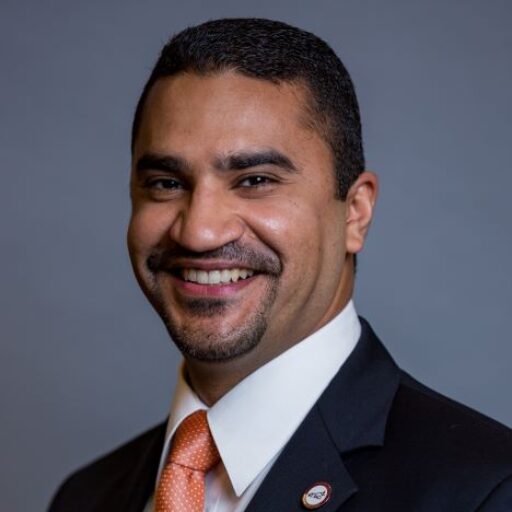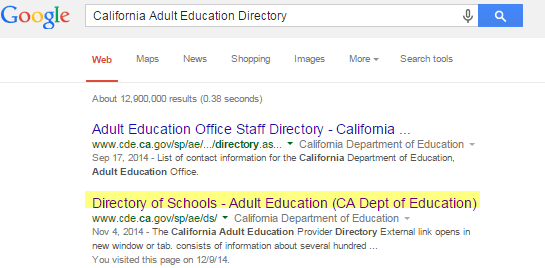I’d like to dedicate this particular post to a former student of mine, Tracey, who left a comment with a question on episode 10 of the FacultyWorkshop Podcast. The title of that episode was “Setting The Bar: How High Should Your Expectations Be?”
Tracey is currently finishing up her masters degree in Leadership and Management, and is planning on continuing her education and earning a PhD in Organizational Leadership and Management. Tracey has been through a lot of challenges thought-out her life, but she has always maintained high standards for herself and persisted in achieving her goals. Over the years she’s learned a lot and gained some valuable experiences. She also has a passion for wanting to help others, which is why Tracey would like to teach a class on leadership and motivation to students, to help them discover their full potential. However, she’s not sure how to get to that point or where to start.
I’ve briefly responded to Tracey with a few tips on Facebook, but I thought I’d take the opportunity to elaborate on my response and provided some concrete examples and resources that may help Tracey and others who may be interested in teaching and helping others.
In most cases, teaching at a college level requires a minimum of a graduate degree, although some universities will allow graduate students pursing a masters degree to teach under the supervision of a full-time professor. However, for people like Tracey who have a genuine desire to help others and have a passion for sharing their knowledge, there are other avenues to teach and help others by teaching outside of academia.
I think in order for you to know where to start, you need to know where you’re headed. You need a destination! So you may want to engage in an exercise that we in the blogging world call creating your customer avatar. In the business world it is referred to as defining your target customer or market. It begins by visualizing exactly the type of student that you want to teach. And teaching does not have to be in a traditional classroom in school or college. Teaching and more importantly learning can happen anywhere. So think about what your ideal student would look like, what their background would be, and where they are mostly likely to be found. There’s a simple and excellent form to help you with this at http://facultyworkshop.com/customeravatar. The form is courtesy of LikeABossGirls.com. If it helps, replace the word customer on the form with the word “student”.
Let me give you a couple of student avatar examples.
When I decided to teach I knew that my “student avatar” or target market where undergraduate college students majoring in hospitality management. I knew who I wanted to teach, what I wanted to teach, and where I wanted to teach (college). So my destination and starting point, after a career in the corporate world, became crystal clear. I needed to complete my graduate studies, while gaining industry experience, and then I needed to pursue opportunities in higher education. Once I was done with my schooling I researched every higher education opportunity in hospitality management. So my student avatar and location were both found within a traditional academic setting. This may or may not be the case for you depending on who you are focusing on.
On the other hand when I decided to create FacultyWorkshop.com my goal was to provide a resources to share (or teach) successful strategies on teaching, classroom management, productivity, and professional development to “college” educators. My student avatar was very clear. I knew that I did not want to do this through traditional classes in a college setting and I wanted to make my content available to a broader audience. I wanted the FacultyWorkshop.com project to be a resources that is accessible to college educators around the world. So I built my own platform to do the teaching and sharing through my website, podcast, and the YouTube channel that I am current building. So going back to Tracey’s particular question on where to start, I would suggest that you begin by defining “who” you want to teach and inspire. The how, when, and where will automatically follow. But, just in case it doesn’t, here are some ideas of places where you can begin teaching at:
1. Community Adult Education School
Many schools districts in the U.S. offer Adult Education classes to a variety of learners ranging from people who simply want to complete their high-school education, to life-long learners, to people wanting to gain new employment skills. Some of these schools invite non-teachers from the community to offer and teach classes that may be relevant and of interest to the local community. If you are living in the U.S., you can begin your search for an Adult Education or Continuing Education Schools by checking our your local school district, or if you would like to expand your search and look for more schools, you can visit the website for your state’s Department of Education and use their website’s search to look for “Adult Education Directory”. I’ve had success in locating a listing of Adult Ed. schools just by searching Google. Simply go to Google and type the following: “[the name of your state] Adult Education Directory”.
2. Community Classes
The Parks & Recreation Services department within your local city is an excellent place to explore the opportunity to develop a new class or assist with existing classes. The Parks & Recreational department usually offers classes for a variety of age groups starting with very young kids, to teens, and even seniors. Visit their website or stop by their local office and pick up a schedule or catalog of classes. Contact them to find out what the process is for offering a community class.
3. College Community Education Classes
Most Community Colleges within the U.S. offer Community Education or Continuing Education classes that are typically taught by non-faculty members. Anyone from within the community who has expertise in a particular subject matter is able to contact the college and propose a class that they would like to offer the community. If your proposal is accepted you can teach the class that you design yourself.
This particular option reminds me of a man I once met years ago who used one of these classes to launch a successful business. This gentleman had a particular area of expertise and wanted to share his knowledge with people. He decided to offer his course through his local community college’s Community Education department. He had 14 students enroll in his first class. 14 students may sound like a small number, but he was tickled that anyone would actually sign-up for his course.
When I met him a few years later, except this time he was teaching the same class in a large hotel banquet room to thousands of people. What he taught was of value to his target audience and he was good at it.
4. Extended University
Some public U.S. universities such as UCLA house an extension division or college that offers a variety of credit and non-credit courses that are taught as a part of the extended university, which are designed to serve the external community rather the than local student population. The concept is similar to that of the continuing and community education classes offered at community colleges. These university extension divisions or colleges invite locals with expertise to join the ranks of their instructors and develop courses that they can teach through the university. If you’d like to see an example of this, check out UCLA’s Instructor Development website or go to: http://facultyworkshop.com/uclaextension.
5. Local Clubs and Associations
Depending on your specific target student, you may find that they can be located at your local non-profit clubs or associations such as the: YMCA, county or city library, the Boys & Girls Club, and local Teen Centers. Many of these organizations offer classes and programs on: leadership, civic engagement, sporting events, youth camps, youth development, school enrichment, student mentoring, and tutoring.
6. Local Non-profits and Charities
Most of the organizations listed above will provide you with some compensation for teaching a class, but not all of them will. If compensation isn’t an issue for you, consider donating your teaching time to a local charity. It will give you an opportunity to serve your community, gain teaching experience, and network with local leaders. Besides, your donated time might be a tax benefit if you live in the U.S.
Here’s an example, a few years ago I helped my wife organize several classes to be taught by a veterinarian and professional dog trainer at a local animal shelter. The student avatar or target market were local pet owners. While these were paid classes, all of the proceeds from the class went directly to the shelter. The instructors (the vet and the dog trainer) donated their time.
There are approximately 1.5 million charities and non-profit organizations in the U.S., so there isn’t a shortage of places where you may be able to offer your services. Simply pick a cause or group that you are personally interested in and begin there.
However, before you begin contacting the places I’ve suggested, be sure to do your due diligence. Make sure that you research their current course offerings, if any, to avoid duplication. You should also have your course proposal, course outline, and a list of the resources that you plan on using or recommending ready in case they ask you for a sample. In other words, be prepared before you offer to teach a class.
If this is all new to you, consider taking one of the classes offered within your community to get a personal feel for how they are structured and taught. Take detailed notes of what works and what doesn’t and use that information to help you build or design the class that you’d like to teach.
Well, I hope you found this post useful. If you did, I’d be grateful if you’d help spread the word by Well, I hope you found this post useful. If you did, I’d be grateful if you’d help spread the word by sharing this with friends or colleagues on LinkedIn, Facebook, Twitter, Reddit, or any other social media platform you use.





